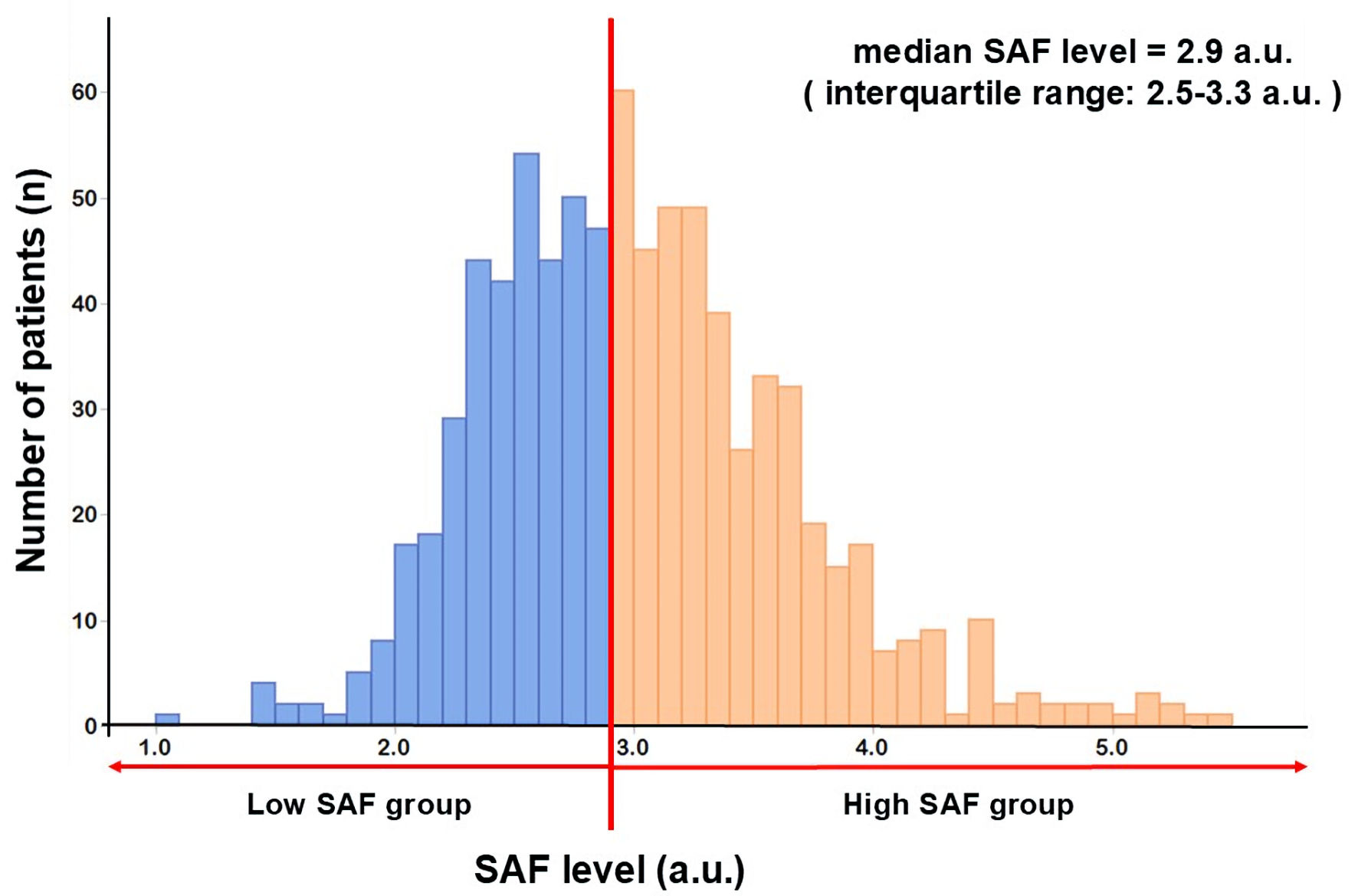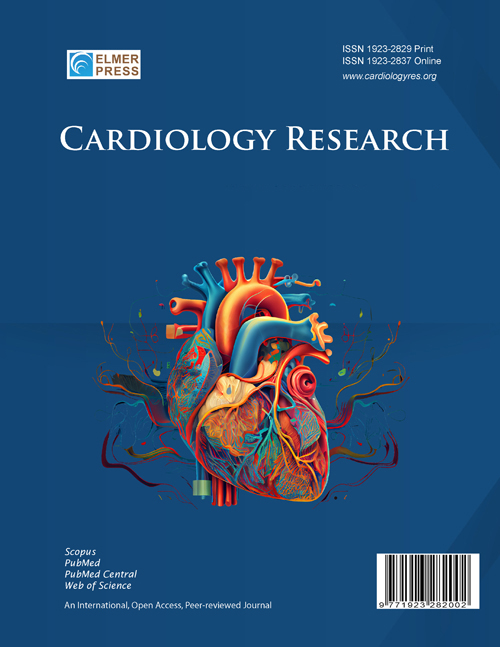Relationship Between Advanced Glycation End Products Tissue Accumulation and Frailty in Patients Undergoing Cardiac Rehabilitation
DOI:
https://doi.org/10.14740/cr2010Keywords:
Advanced glycation end products, Cardiac rehabilitation, Cardiovascular disease, FrailtyAbstract
Background: The advanced glycation end products (AGEs), which can be assessed through skin autofluorescence (SAF), have been linked to chronic kidney disease (CKD), diabetes mellitus (DM), and aging. However, it is unknown how frailty and SAF levels are associated with cardiovascular disease (CVD).
Methods: We enrolled 1,000 consecutive CVD patients who participated in phase II cardiac rehabilitation (CR) and underwent assessment of SAF between November 2015 and September 2017 at Juntendo University Hospital. Of these, 48 patients were excluded as duplicate cases, and a deficiency in SAF data led to the exclusion of an additional 146 patients. The final analysis included 806 patients.
Results: Seventy percent of patients were male, and the mean age was 67.0 ± 12.9 years. In this study, the patients were divided into two groups (high SAF group and low SAF group) based on the median SAF level (2.9 a.u.), which is known as a cutoff value to increase the risk of CVD in previous studies. Compared with the low SAF group (n = 368, 45.7%), the high SAF group (n = 438; 54.3%) was older, and the Kihon Checklist (KCL) total score and prevalence of DM and CKD were significantly higher (all, P < 0.05). Multivariate regression analyses demonstrated that age was the only independent associated factor (P < 0.05) in the low SAF group. Conversely, in the high SAF group, creatinine, hemoglobin A1c (HbA1c) and the sub-total KCL score (1 - 20) were independently associated with SAF levels (all, P < 0.05).
Conclusions: Frailty assessed by KCL is one of the factors significantly correlated with the accumulation of AGEs as well as creatinine, HbA1c and brain natriuretic peptide (BNP) levels in the high SAF group of patients with CVD undergoing phase II CR, who have the higher risk of the onset of CVD and all-cause mortality.

Published
Issue
Section
License
Copyright (c) 2025 The authors

This work is licensed under a Creative Commons Attribution-NonCommercial 4.0 International License.










